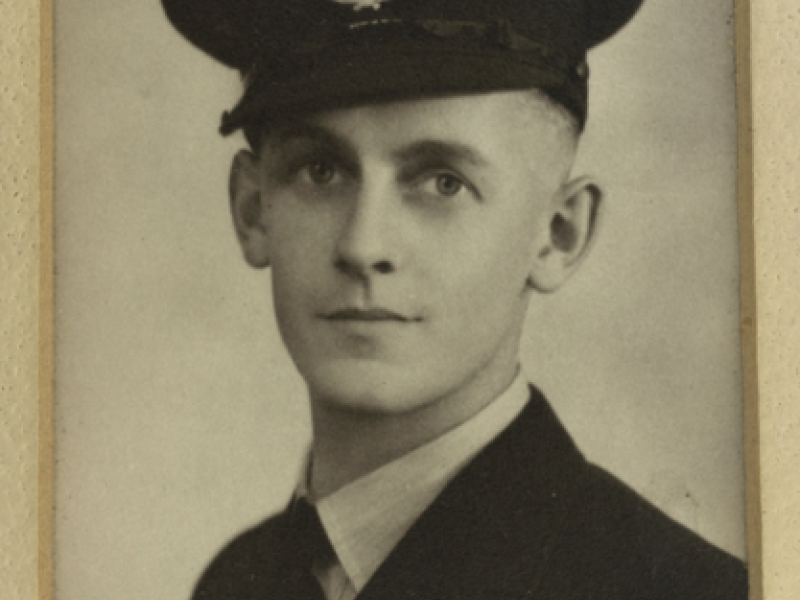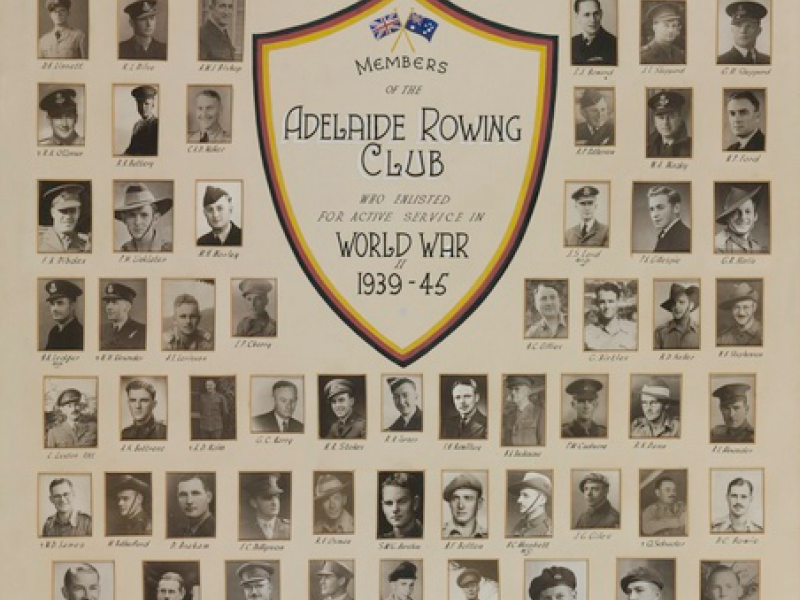Flying Officer Philip Brooks, No. 13 Squadron RAAF
Philip Gardner Brooks was born in 1917, one of six children to Albert and Margorie Banks of Adelaide, South Australia. A bank clerk before the war, Brooks was an active member of the Adelaide Rowing Club and paraded part time with the 10th Battalion (known as the Adelaide Rifles). He married Marjorie Lewis in 1940 and the couple had two children, Anthony and Julie.
Brooks enlisted in the Royal Australian Air Force in Adelaide in August 1940 and trained as an airman in accordance with the Empire Air Training Scheme. After initial training at Somers in Victoria, he carried out elementary flying training at Parafield in South Australia and service training at Point Cook, where he qualified as a pilot in February 1941. He was subsequently commissioned as a pilot officer.
Having learned to fly in Tiger Moth trainers and the Avro Anson, Brooks completed Air Observer School at Cootamundra in New South Wales, and the General Reconnaissance School at Point Cook. He then spent time at an operational training unit at Nihill in Victoria where he trained and qualified to fly the Lockheed Hudson light bomber and reconnaissance aircraft.
A skilled pilot, Brooks was posted to No. 7 Squadron at Laverton in Victoria, where he spent a month flying coastal patrols, seaward searches, and anti-submarine patrols after the outbreak of the Pacific War. He was transferred to No. 6 Squadron, also at Laverton, in March 1942, before a posting with No. 13 Squadron at Hughes Airfield at Darwin in the wake of the Japanese bombings.
Having suffered heavy losses against the Japanese in the previous weeks, No. 13 Squadron carried out operational attack and reconnaissance sorties throughout Timor and the eastern islands of the Netherlands East Indies. The island of Ambon was facing invasion and ultimately fell to the Japanese.
On 22 May 1942, Brooks’s Hudson A16-174 was one of two Australian aircraft that failed to return from a strike against Japanese shipping in Ambon Bay.
After the war, Australians imprisoned on Ambon later described the raid. The two Hudson bombers carried out their attack run at an exceptionally low level, dropping their bombs directly on the enemy ships, before two Japanese Zero fighters took off from a nearby airfield.
One of the Japanese aircraft was shot down before the remaining Zero engaged and shot down Brook’s aircraft. The prisoners who witnessed the incident said that “for sheer courage and bravery they have never seen the likes before or after”. Brooks and his crew “did a magnificent job in a magnificent manner”.
Philip Brooks was 24 years old.
He was buried at Passo village but today rests in Ambon War Cemetery in Indonesia.
Aaron Pegram, Historian, Military History Section
- Australian War Memorial https://www.awm.gov.au/collection/E2764

 Australian War Memorial
Australian War Memorial
